Welcome to this tutorial on finding veterinary medicine evidence using the EBSCO version of CAB.
To access CAB, go to the Library Homepage and hover over the search icon at the top of the page.
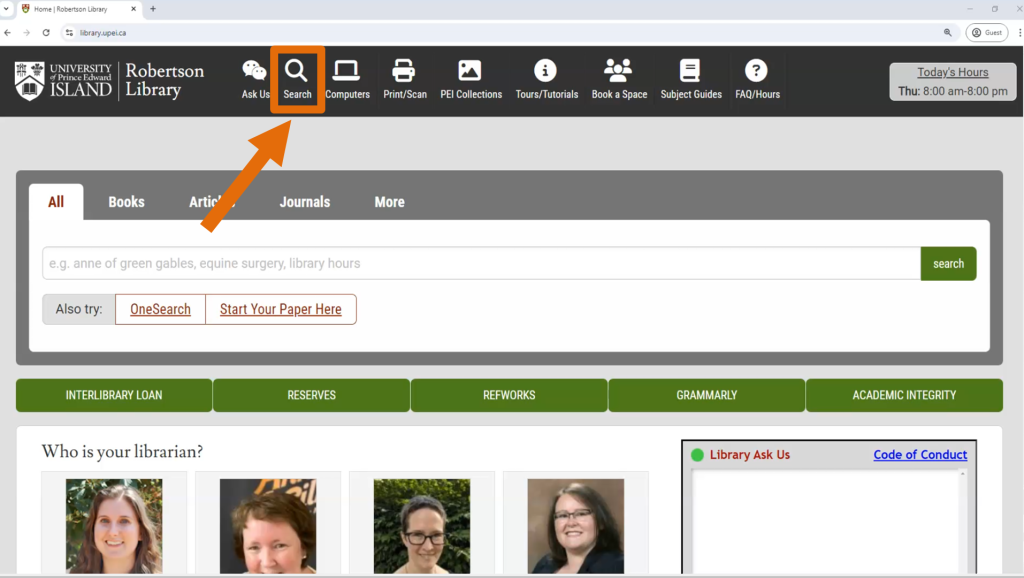
Then, select CAB (Veterinary) via EBSCO from the list of most popular search tools.
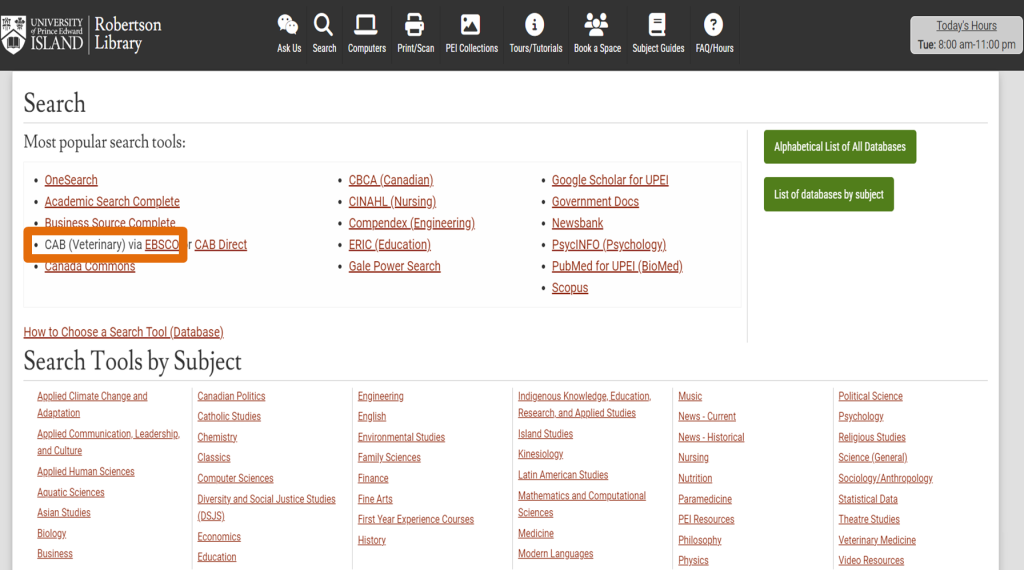
If you’re off campus, you will be asked to log in. Use your UPEI username and password to log in. This is the same username and password that you would use to access Moodle or your UPEI email.
If you are on campus, you should be taken directly to the Advanced Search page.
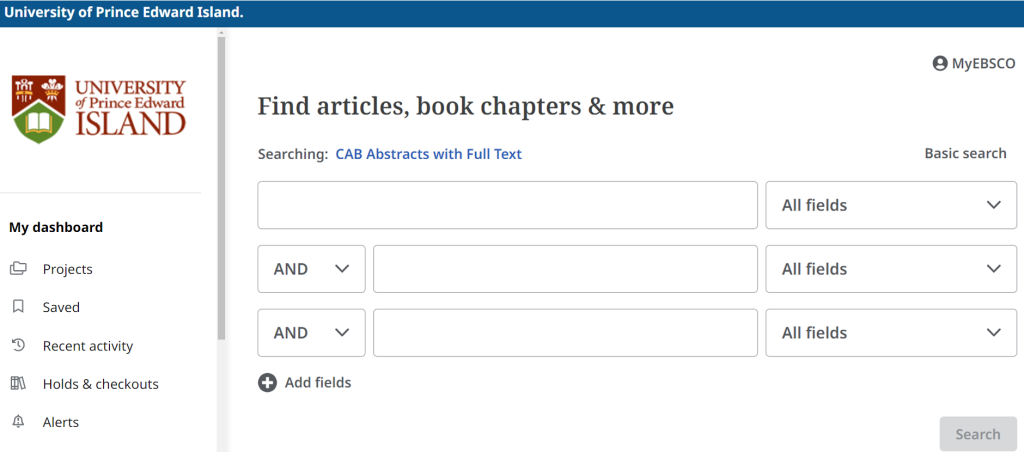
Let’s search for information on the topic Does heat stress affect the immune system of dairy cows?
In CAB, we need to search for keywords or concepts, not a whole question. One concept would be heat stress, one would be immune system, and one would be dairy cows.

I am going to use each row of the search box for a different part of my topic. I will put the first keyword, heat stress, into the top search box. Because there are two words in the phrase “heat stress,” I’m going to put quotation marks around it to glue those words together. Then, I will put the second keyword, immune system, in the second search box, also with quotation marks around it. Finally, I’ll put dairy cows in quotation marks in the third search box.

Note the use of AND between these boxes, to specify that we want results that have all three concepts. If I had a fourth concept, I would use the “Add field” link to get another box.
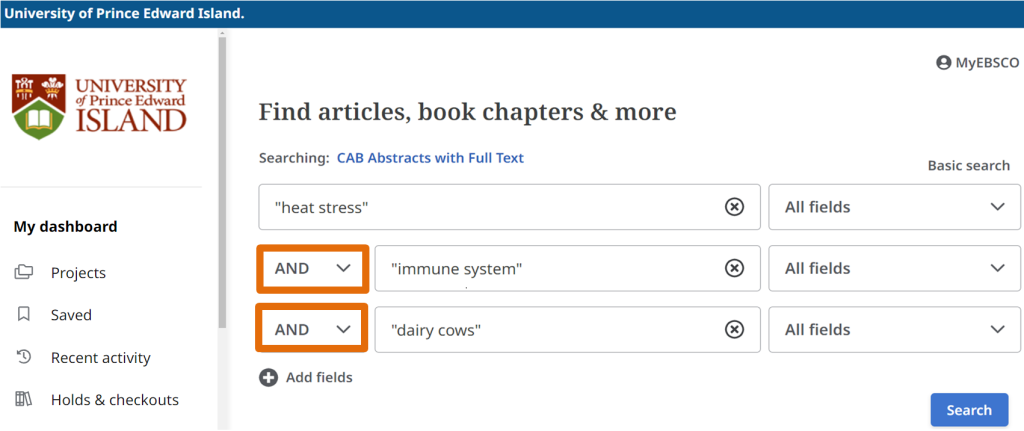
Before I search, I’ll take a minute to think about other words that researchers might use to describe the same concept. For “heat stress,” I might also want to see articles about times of high temperature, so I’ll add OR “high temperatures” to the first box. Using OR tells the database that I want any results that use either the phrase “heat stress” OR the phrase “high temperatures.” For “immune system,” I’d also be interested in “immune function,” “immunity,” and other terms starting with “immun.” I can use immun* to find any term starting with those five letters. Dairy cows might also be called dairy cattle or heifers.
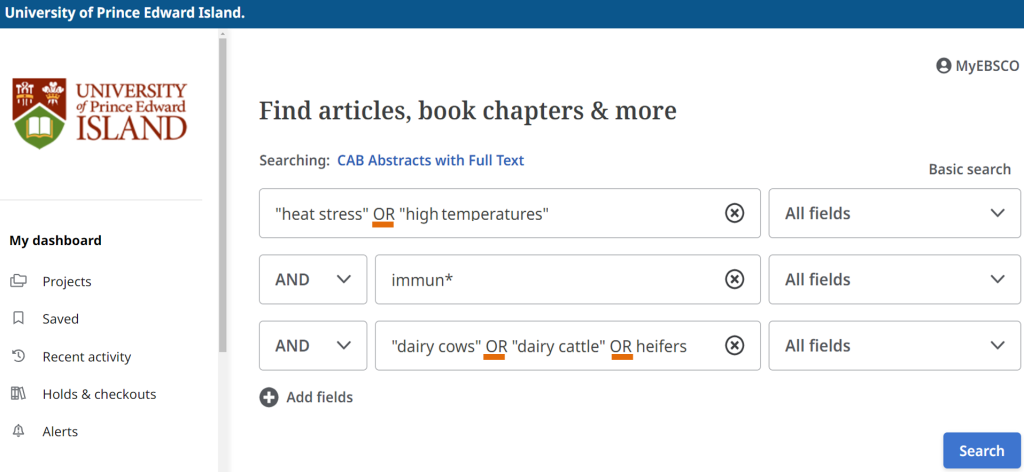
After I select “Search,” I see 382 results. I can see the title of each result, the list of subject terms related to the result, the journal and publication date, the authors, and the very beginning of the abstract.

The buttons under the search box let me filter my search results.

For example, I can choose only the results that are Available (online) in full text. Under the “All time” button, I can choose to only see results from the past 12 months, 5 years, or 10 years,

but I can also use the “All filters” button to open the filters window and set a more specific time period in the “Publication Date” section.

I can also use the “All filters” menu to find only items in a particular language, or any other requirements I think are useful.

But for now, let’s look at all of the Available (online) results from the past 5 years.

If I want to know more about a specific search result, the “show more” and “plus more” links show me more of the abstract and all of the subject terms.

I can also click on the title to go to a page with more information,

including more information about the journal in which this article was published,

the subject terms and other keywords, and the DOI.
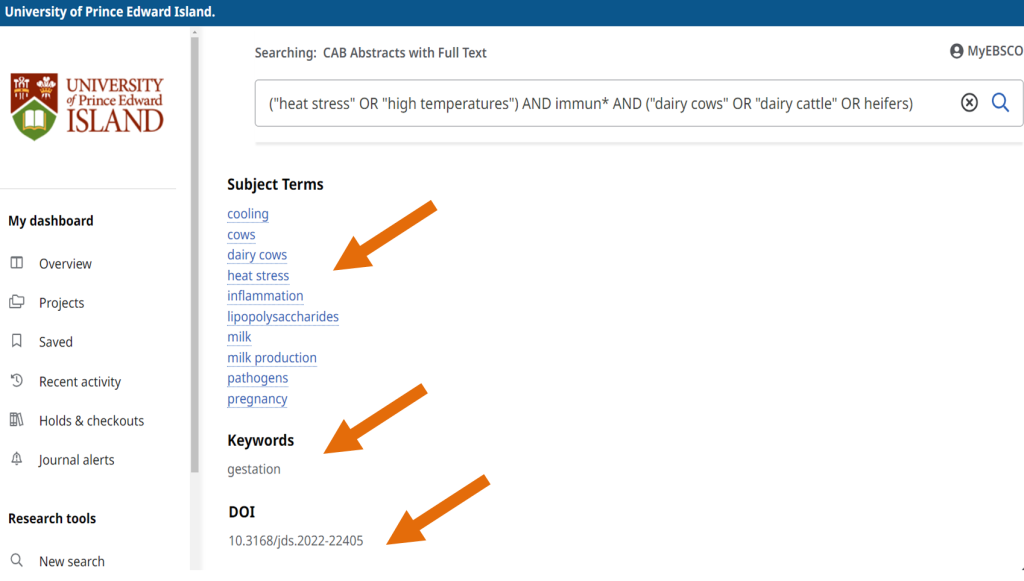
The subject terms are a good place to look for other search term ideas. For example, if I’m also interested in inflammation as a term related to immune response,
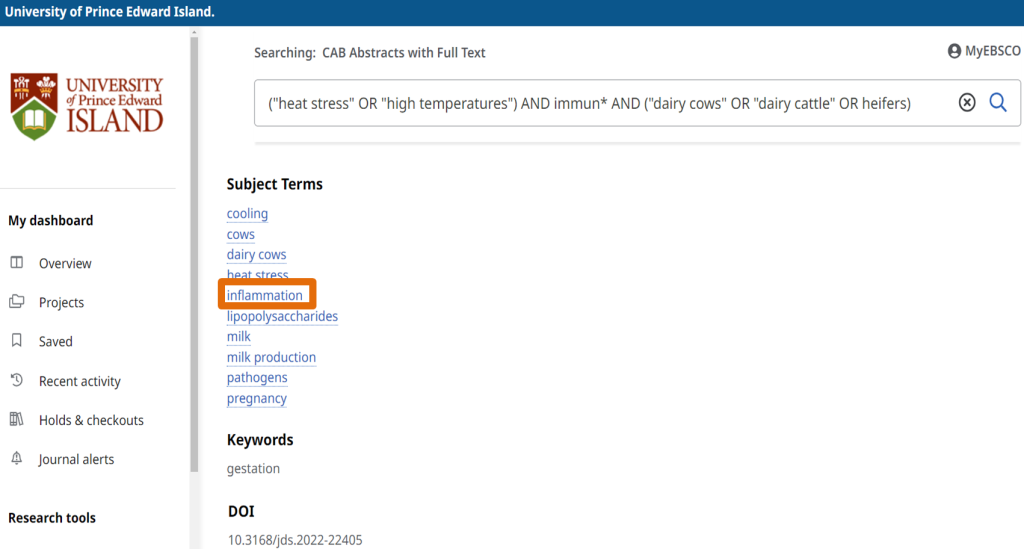
I can use the “Advanced Search” link at the top right of the search results page to go back to my search and add OR inflammation to my immune-related terms.
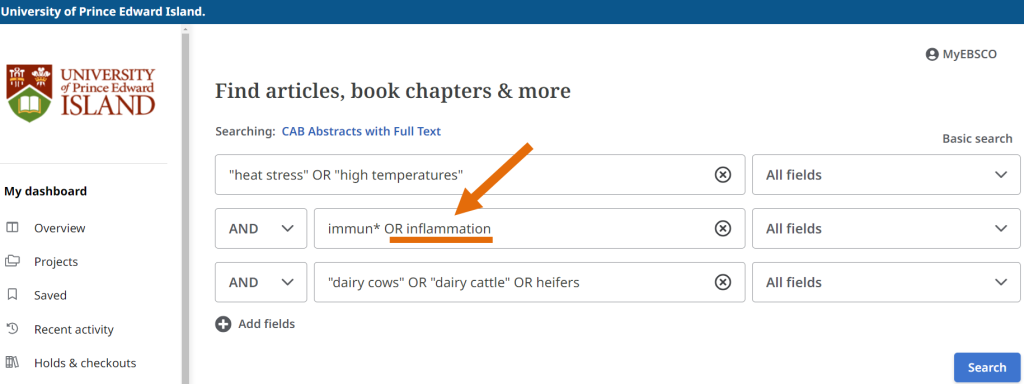
On the search results and the item page, each item has a dropdown menu labeled “Access options.” In the Access Options dropdown, the Check@UPEI (Full Text Finder) link should take me to the full text of this article. The same applies to PDF or an “Online full text” link. The PDF and “Online full text” links will open in the current tab, while other links will open in a new tab or window.

If I want to see an article that I clicked on earlier, I can use the “Recent Activity” section in the menu on the left side of the page. On this page, there are two sections: Search History and Viewed Records. Search History is a list of all the searches I’ve run in this session, with the option to run them again by clicking on the search terms. The “Viewed Records” list shows the item records I’ve opened during this session.

If an item only has the “Make an Interlibrary Loan (ILL) Request” link, that means that we don’t have immediate access to this article, but we may be able to borrow a copy for you from another library.

To learn more about Interlibrary Loan, you can watch the Interlibrary Loan tutorial or go to library.upei.ca/ill
If you need more help, AskUs at the service desk, phone us at (902)-566-0583, send an email to reference@upei.ca, or use the chat tool on the library website. You can also find the veterinary medicine librarian’s information on the library homepage.

We are here for you.
Note: A video version of this tutorial is also available.